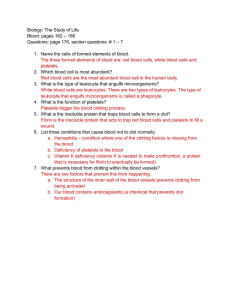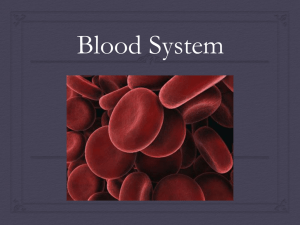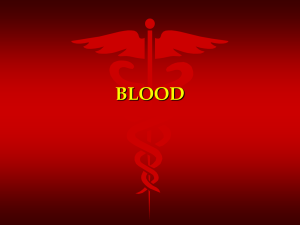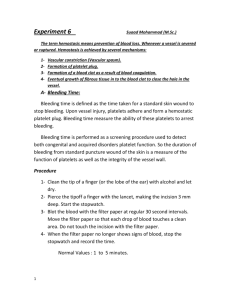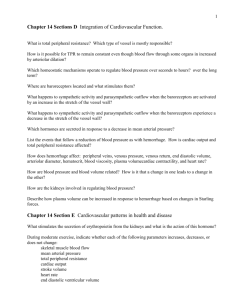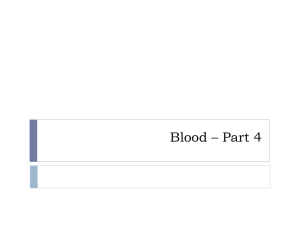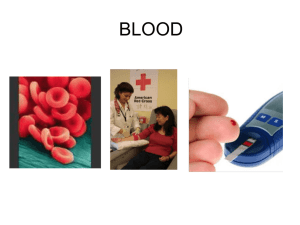Blood Clotting
advertisement
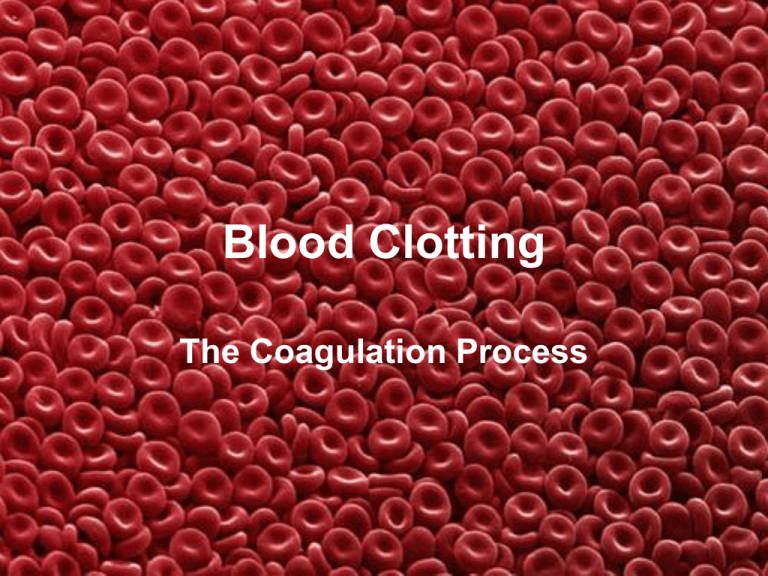
Blood Clotting The Coagulation Process What is Blood? • Blood is a fluid that carries nutrients, gases, and wastes through the body. • The blood consists of these components: Red blood cells, white blood cells, platelets, and plasma. • Blood is responsible for transporting oxygen to the whole body. What is Blood Clotting? • When you cut your finger, capillaries are perforated and blood begins to seep out. • Blood coagulation has to occur in order to stop blood from coming out to prevent more serious injury or death. • Being able to form blood clots is vital for survival. Coagulation Process • When a blood carrying vessel is perforated or torn collagen fibers and other tissues are exposed and the vessel constricts decreasing blood flow to the injury. • When these tissues are exposed the enzyme thrombin is released. • Thrombin activates the clotting factor in platelets causing them to become sticky. Coagulation Process • The platelets begin to stick together at the wound site binding to the exposed fibers. • Platelets release several chemicals and change their shape to fit the formation of the plug. • Then, a fibrin mesh forms and insures the clot will stay. • Finally, the blood clot must dissolve in order to restore normal blood flow to the vessel. Works Cited • King, Michael. "Blood Coagulation". UI School Of Medicine. October 3, 2009 <http://themedicalbiochemistrypage.org/bloo d-coagulation.html>. • Moake, Joel. "Introduction: Bleeding and Clotting Disorders". Merks Manuals. October 23, 2009 <http://www.merck.com/mmhe/sec14/ch173/c h173a.html>. • •


